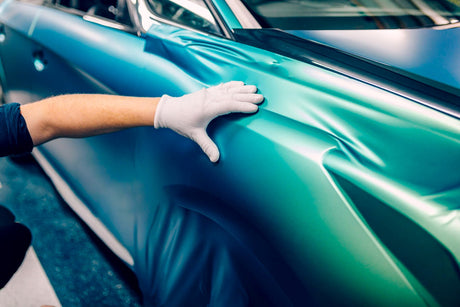When it comes to wrapping, it is critical to get the surface energy of different films right, especially when you have to put material on top of each other.
It can be very tricky when installing if you did not know the extent of surface energy and try to work around something, as it can cost you when you grab the material, but then it tears, only because you did not get the energy right.
The fact is that just knowing which type of film has high or low surface energy is crucial already.
Generally speaking, for most types of films, gloss wrap film has very high surface energy. So if you want to put a stripe on top of this wrap, or you have two panels that have to be stick onto each other, panel overlaps panel will be right to go in this case.
For gloss film, you do not have to do much prep for them, only put one and another panel on. You might want to use soap water or alcohol to wipe it before putting it on though. However, even if you don’t, the panels will stick to each other well enough already.
Going down from gloss, the surface energy of other types of films comes lower and lower: Satin film, matte film and then there is a textured film like brushed metallic, carbon or something like that. When you think of these films that have very low surface energy, it is better to remember that you have to prep them when installing.
These kinds of films are different from gloss film because of the prep. For a matte film, you can prep them very easy and straightforward. When doing inlayer or overlayer, you can take just a little bit of alcohol and put on a paper towel, then clean the edge of the film which is going to be overlapped. This trick will help raise the surface energy, and meanwhile, protect the film,
What some people might do is that if the film has very low surface energy, they might gloss the film on the edge that is getting overlapped. However, still, using alcohol would still be considered the safest.
There are lots of things to think about with lower surface energy material. However, we also want to consider the surface energy of the subject when wrapping. For example, windows have very high surface energy. If your material touches it, especially on a cold day, it might just crack.
So sometimes it might be easier to lower down the surface energy of what you are wrapping. Mask tape is one of the great solutions for doing that.
To conclude, if you get the surface energy right while installing, your stripes or overlaps will stick and stay. It will be saving you from lots of troubles!








